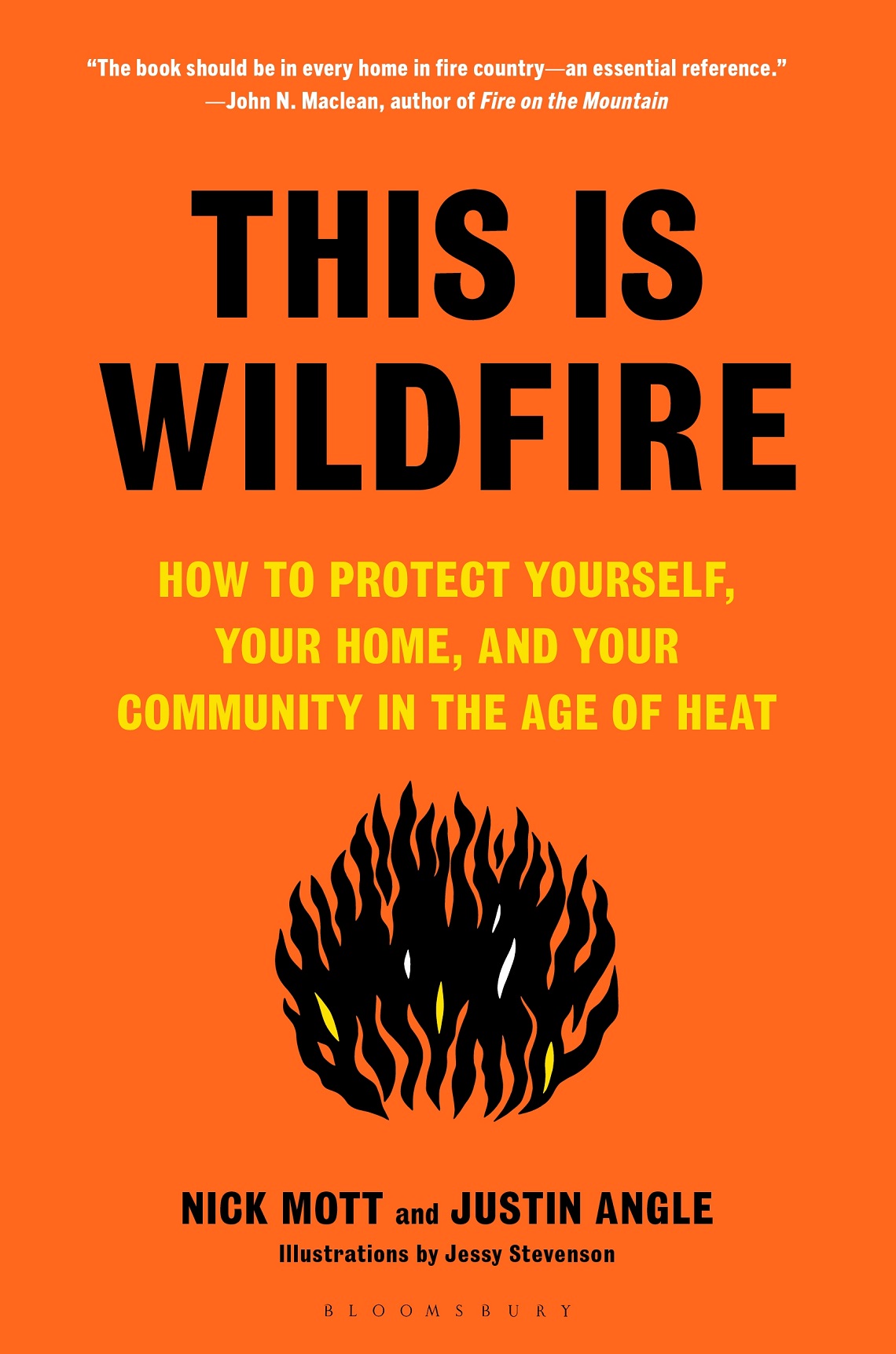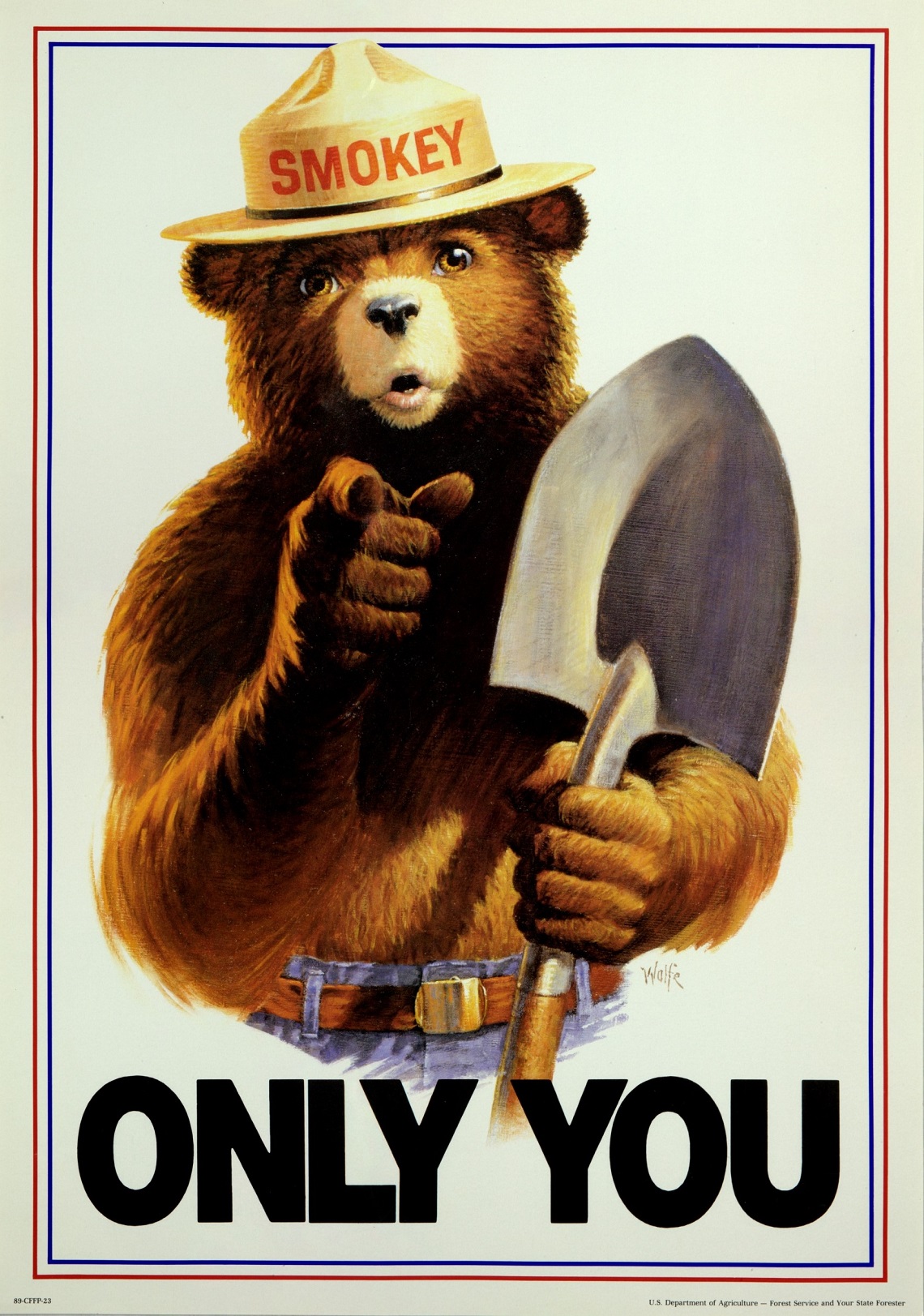This is Wildfire
UW Foster alumnus Justin Angle examines the conundrum of wildfire in a warming world—and how we can mitigate the risk more effectively
When Justin Angle (MBA 2006, PhD 2012) thinks about Smokey Bear—admittedly, more often than most—he does so with decidedly mixed feelings.
The U.S. Forest Service’s friendly, furry mascot certainly deserves praise for inspiring personal responsibility (“Only YOU can prevent forest fires”).
But Angle, a professor of marketing and the author of “This is Wildfire,” has also come to view Smokey as a manifestation of the nation’s misguided approach to wildland fire over much of the past century. A symbol of suppression.
“Fire is a natural part of the landscape, a natural part of ecosystems, and it has been since the planet has had stuff to burn,” Angle says. “It wasn’t until the last 100 or so years that the notion of suppressing fire on a wide scale began dominating the popular culture.”
In his new book, Angle argues that this uncompromising policy, coupled with a rapidly warming climate and populations living ever deeper into wilderness regions, has produced conditions primed for the kinds of megafires that, in recent years, have scorched vast landscapes and spewed toxic smoke across the continent. But he also proposes practical ways we can mitigate the risk as individuals, as communities, as a nation.
More on Smokey’s checkered legacy later. But first, you may be wondering, how does a marketing professor know so much about wildfire?
Into the fire
Angle began his career as a bond trader before earning his MBA and PhD at the UW Foster School of Business. He joined the faculty of the University of Montana in 2012. A competitive ultra trail runner and lover of the outdoors, Angle was drawn to the epic landscapes around his new home.
But that first year in Missoula saw a particularly intense fire season, with a heavy incursion of smoke, which was new to Angle. The risk hasn’t relented.
“In the time I’ve been here, I’ve experienced climate change in real time,” says Angle, “both in terms of changing weather patterns and landscapes, and the severity of fires.”
Now a professor of marketing and Poe Distinguished Faculty Fellow at the UM College of Business, Angle has diverged from his studies of branding, identity and consumer behavior in search of insights from social psychology that will guide people toward better choices for the planet.
 To address one of the biggest challenges facing his place on the planet, he immersed himself in wildfire, studying its history, policy and strategy. He connected with faculty in the UM College of Forestry and Conservation. Collaborated with the nearby National Fire Lab. Came to know the elite corps of wildland firefighters known as “Smokejumpers.”
To address one of the biggest challenges facing his place on the planet, he immersed himself in wildfire, studying its history, policy and strategy. He connected with faculty in the UM College of Forestry and Conservation. Collaborated with the nearby National Fire Lab. Came to know the elite corps of wildland firefighters known as “Smokejumpers.”
“It became immediately clear that Montana is an epicenter for some of the most important work on fire,” Angle says. “And I wanted to understand it better.”
He explored the topic in the long-running public affairs program, “A New Angle,” that he hosts for Montana Public Radio. In 2021, he and producer Nick Mott spun off a podcast series called “Fireline,” which won a national Edward R. Murrow Award. Angle and Mott followed up this year with “This is Wildfire: How to Protect Yourself, Your Home, and Your Community in the Age of Heat.”
Angle says this stream of work addresses “a need for more translational scholarship, taking complex issues like wildfire and helping the public understand not only what’s happening, but potentially their role in the solution.”
History of suppression
It begins with a history lesson. Fire has always played a key role in the organic cycle of life, death and rebirth across North America. “Indigenous populations lived in coexistence with fire for millennia,” Angle says. “They respected it as a natural part of shaping the landscape and used it to actively manage spaces for crops, travel and hunting.”
Besides recognizing the value of naturally occurring fires, tribes practiced a periodic technique known as “cultural burning” to revitalize their lands and the plants and animals that lived on them.
But this respectful coexistence ended abruptly in 1910, when a rail spark ignited a conflagration that decimated three million acres across a swath of Washington, British Columbia, Idaho and Montana, sending smoke all the way to the East Coast.
After “the Big Burn,” the nascent U.S. Forest Service, a branch of the Department of Agriculture, adopted a strict policy of suppression to protect the nation’s natural resources. It banned the practice of controlled burning and enforced “harsh punishments for putting fire into the landscape or allowing existing fires to burn,” Angle says. “The history of suppressing fire is also one of suppressing culture.”
The trouble with Smokey
A few decades later, the Forest Service collaborated with the Ad Council to animate a beloved—and seemingly benign—forest ranger named Smokey Bear.
Smokey proved to be an extremely effective pitchman for the federal government’s aggressive policy of wildfire suppression. And the populace was lulled into a false sense of security.
“We got really good at putting out fires,” Angle explains. “So good, that the average citizen started to assume that the government would always put out fires, that we were safe to build our homes wherever and of whatever materials we wanted.”
More and more people migrated to wildland areas—some for the quiet and views, others to escape exorbitant costs of urban living. All the while, rising temperatures were drying overgrown landscapes, turning trees into tinder.
“And the stage is set,” Angle says, “for these massive, uncontrollable fires we’re seeing now.”
Course correction
Along with bigger blazes, wildfire season now stretches 80 days longer than it did just three decades ago.
Can this trend be reversed? Not so long as we continue our reliance on fossil fuels and keep approaching wildfire like a medical system that treats only symptoms, never the cause, according to Angle. “We throw so much money at suppression that there’s not a lot left for forest management, thinning projects and prescribed burns.”
He believes that flipping that equation would make a huge difference. Experts like Susan Prichard, a fire ecologist at the UW School of Environmental and Forest Sciences, have demonstrated that a strategy of prescribed burning and vegetation thinning is the most effective way to prevent big, uncontrollable fires.
At a more local level, Angle says that we need to think harder about where and how we build—or rebuild after disaster. State and local governments can enact stricter construction regulations. Incentives could be built into insurance and mortgage lending markets.
Some clear-eyed economic analysis wouldn’t hurt, either.
“The cost of doing a prescribed burn or thinning project is miniscule relative to the cost of a town burning to the ground,” Angle says. “And that’s before even talking about the loss of lives.”
A turning point?
The scale of fires that have burned across the west in the past few years is nearly unfathomable. This year, blazes burned 45 million acres across the belly of Canada, spewing smoke that choked the skies across an enormous swath of the American Midwest, East Coast and Southeast. On Maui, we watched in horror as a wind-borne grass fire consumed the historic town of Lahaina in a matter of minutes.
“These mega fires are terrifying. And once they get to that size, there’s really little we can do,” Angle says. “But there are things we can do to prevent those types of events. And there are things we can do to make our homes and communities more resilient (see below).”
He views fire as a solvable problem. Because we’ve solved it before.
Most American cities were decimated by fire at some point in their early history. “Cities used to be devastated regularly by fire. But we changed building codes, materials and practices. And cities became much safer,” Angle says. “We can apply some of those same principles to wildfire—if we can build widespread political will.”
He wonders if the past few years will be a wake-up call to the reality that wildfire affects everyone, in every region.
“Maybe this year will be a turning point,” he says. “I certainly hope it is.”
What YOU can do
 Smokey Bear is right about one thing: we can all take more responsibility for protecting our lives and homes from fire. “Thinking of your home as a source of fuel and about how fire can be delivered is an important mindset to adopt,” says Angle.
Smokey Bear is right about one thing: we can all take more responsibility for protecting our lives and homes from fire. “Thinking of your home as a source of fuel and about how fire can be delivered is an important mindset to adopt,” says Angle.
If you live in an area vulnerable to fire, he suggests taking actions to “harden” your home:
- Consider your property as a concentric set of rings of defense.
- Remove anything on, under or against the house that could serve as fuel.
- Clean gutters and roof; trim trees or remove shrubs that touch the house.
- Replace wooden roofing.
- Collaborate with neighbors; devise a fire plan.
If you experience an incursion of wildfire smoke, he recommends that you:
- Understand that airborne particulates are dangerous—especially to those with pre-existing respiratory conditions.
- Seek credible measures of air quality.
- Close windows and storm windows.
- Use a HEPA filter or make one yourself with a furnace filter and box fan.
- Stay indoors if you are able.
- Wear an N95 mask when you have to be outside.
